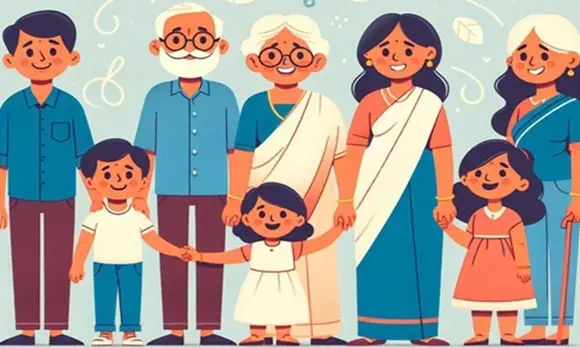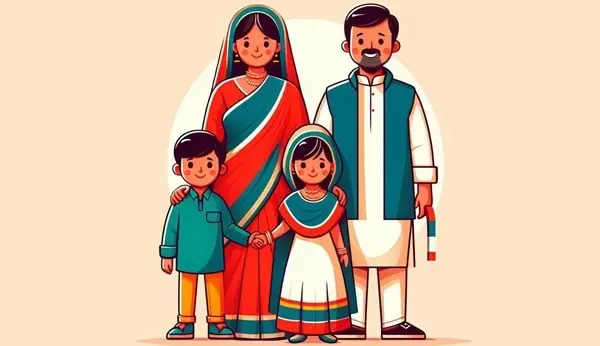Two Child Policy is an initiative taken by the Government of India that was implemented in the year 2016. Under this policy, couples limit to having only two children and are an initiative to control population growth in the country. The policy is associated with a number of benefits such as improved health care and education for children and more job opportunities for women. This policy has also decreased the number of abortions in the country and has reduced the instances of unemployment as well. But every policy has some its own benefits and drawbacks, let’s explore it.
Advantages of Two Child Policy

1. Control on Population:
Limiting families to two children can help slow down rapid population expansion, easing the demand on resources, infrastructure, and the environment. It also offers tremendous economic benefits. More controlled population growth may result in lower unemployment and better resource allocation, leading to economic growth and development.
2. Better allocation of Resources:
The two child policy has improved the quality of life of Indian citizens. Families that have fewer children will be able to distribute their income equally on the improvement of each child. It will be possible to allocate more time, money and attention to each individual child, thus resulting in better educational facilities and job opportunities. Families will also be able to cater to their health and rear more healthy children, enhancing their health outcomes.
3. Enhanced Health in Women:
With the advent of the two child policy, women will have fewer pregnancies and the health of the women would be improved as well. She will feel less physical strain in rearing the children and the kids will have better educational and employment opportunities as well. With fewer children, parents can devote more time and effort to each child’s health and well-being, resulting in improved nutrition, healthcare, and development.
4. Educational opportunities for children:
Parents with fewer children have more time to engage in their children’s education, perhaps leading to higher educational attainment and better employment opportunities. Children from smaller families are less likely to be pulled out of school to work and support their families, resulting in reduced dropout rates and improved long-term outcomes.
5. Governmental and Infrastructural Benefits:
Slower population growth can relieve strain on public services like healthcare, education, and transportation, resulting in higher quality and accessibility. Controlled population growth allows governments to better plan and balance development efforts between urban and rural areas, decreasing overcrowding and underdevelopment.
6. Environmental Sustainability:
When the population of the country is under control, it results in lower carbon emissions and reduces environmental degradation; it also contributes positively towards climatic control. Controlled population increase promotes the sustainable use of natural resources, assuring their availability to future generations.
7. Unintended Consequences:
In the effort to comply with the policy, some families might resort to unsafe and illegal abortions, thus endangering women’s health. Some families may choose not to register additional children, to avoid penalties that might result in lack of basic resources to them.
Disadvantages of Two Child Policy
1. Imbalances in Demographics:
As the program reduces birth rates, the share of the population that is elderly rises. This causes a demographic shift, in which a smaller working-age population must support a bigger senior population. This might result in a larger reliance ratio, putting pressure on social assistance systems, pensions, and healthcare facilities. Also, as the number of children born decreases, fewer people will enter the workforce. This can result in labor shortages and greater rivalry for jobs, affecting economic productivity and growth.
2. Gender Imbalances:
A strong preference for male children might increase and the two-child policy can worsen gender disparities. Families may want to produce male offspring, which can result in sex-selective abortions or maltreatment of female children. Such major gender imbalances can have serious social effects, such as an excess of unmarried men, leading to increased social instability and issues of trafficking and exploitation.
3. Psychological Pressure:
Parents with only two children may have high expectations for their children’s academic, professional, and social success. This can create a high-pressure environment for youngsters, causing stress, anxiety, and other mental health problems. Children with fewer siblings may face strong competition or feel lonely because they lack the social support that bigger sibling groups provide.
4. Human Rights Issues:
Limiting the number of children a family can have is frequently interpreted as an infringement on reproductive rights. People may believe that their personal liberties are being jeopardized, leading to resentment and resistance. Implementing and implementing such regulations may need coercive measures, such as fines, penalties, or other types of punishment for non-compliance. This can result in abuses of authority and corruption.
5. Cultural Resistance:
Many cultures regard large families as a source of social and economic support. Policies that limit family size may face resistance and noncompliance, weakening their effectiveness.
Opposition to population planning measures can result in social unrest and unhappiness with the administration. This might undermine the government’s credibility and capacity to govern successfully.
Comparison Between Advantages and Disadvantages of Two Child Policy
| Advantages |
Disadvantages |
| This policy helps to control overpopulation and may lead to resource depletion. | This can lead to aging population and demographic imbalances. |
| Two child policy might reduce strain on the resources and infrastructure | The shrinking workforce and the reduced consumer base can lower the economic growth. |
| Leads to potential reduction in the maternal and child mortality rates | There is an increased burden on the healthcare systems owing to the aging population |
| It is possible to provide quality education and resources per child | High parental expectation can create undue pressure and stress on children. |
| Can reduce environmental degradation and carbon footprint | There could be limited impact, if the policy is not impacted by sustainable policies and practices |
| The policy empowers women by reducing stress on multiple pregnancies | The policy might infringe on reproductive and personal rights. |
| Leads to better family planning measures and improved quality of life. | There is a potential for tremendous social instability, owing to cultural resistance and gender imbalances. |
| Eases pressure on many public services like education, social services and healthcare | There can be a long term strain on welfare systems and pension owing to aging population. |


